Companies
Real estate sector poised for transformative growth
Published
10 months agoon
Vietnam’s real estate market remains robust amid ongoing challenges, as top industry players unveil strategic plans for 2025 to drive transformative growth.
Major developer Phat Dat Real Estate Development Corp reported revenues of $80.6 million in 2024, more than triple its 2023 performance, even though its total net profit fell by 24 per cent to nearly $20.9 million.
 |
| Photo: baodautu.vn |
“This year is much better than last; with upcoming projects like Quy Nhon Iconic in Binh Dinh and Thuan An 1 and 2 in Binh Duong, our outlook is more promising than ever,” said Phat Dat chairman Nguyen Van Dat.
The Quy Nhon Iconic development has sold 627 units in its first phase, with the second phase expected to qualify for sales by mid-March.
Thuan An 1 and 2 are scheduled to begin sales for block A1 after completing financial obligations by the end of April, with a sales launch anticipated before June.
Similarly, after more than two years of restructuring, southern developer Novaland is set to reinvigorate its business plan with the restart of sales for two new projects in Ho Chi Minh City: Park Avenue and Palm City.
The company anticipates receiving building permits for these projects in March and June, with sales planned for the second and third quarters of the year.
Novaland Group expects to hand over more than 3,000 units this year, with NovaWorld Phan Thiet contributing 31 per cent, Aqua City 27 per cent, NovaWorld Ho Tram 19 per cent, and the remainder stemming from projects in Ho Chi Minh City.
Looking ahead, Novaland Group predicts net revenue from real estate handovers to reach $840 million this year, marking a 153 per cent increase over last year, and anticipates net profit of $56 million.
The company also reports receivables of approximately $3.9 billion, with $548 million expected to be collected in 2025.
Other market players are also adapting to the evolving landscape.
Nam Long Group- a market leader in affordable housing segment – is poised to stimulate profit growth in 2025 through enhanced sales activities in Long An and Can Tho in the Mekong delta region; with legal processes advancing in Bien Hoa, Nam Long Group plans to relaunch its Izumi City venture in the second half of 2025.
Analysts at SSI Research Securities forecast Nam Long’s revenue at $220 million and net profit at $25.08 million for 2025, a 4.4 per cent decrease in revenue accompanied by a 35 per cent increase in profit compared to the previous year.
Meanwhile, Dat Xanh Group has shown promising signs following its restructuring phase, particularly in its legal procedures and project implementation.
Industry analysts at VCBS Securities expect 2026 to mark the profit turning point for Dat Xanh, as the company reinitiates its DXH Riverside scheme and launches subsequent phases of the Gem Sky World urban area after a three-year hiatus.
Dat Xanh Group anticipates an initial selling price for DXH Riverside of around $4,400–4,800 per square metre.
The development is projected to generate approximately $1.08 billion in sales cash flow over the next two years, with net revenue more than doubling to $287.6 million and net profit nearly quintupling to $47.6 million by 2026.
Recent assessments by VIS Rating indicate that investors hold $4.4 billion in corporate bonds maturing in 2025- the highest level in three years, improved bank credit appetite and robust liquidity are expected to mitigate refinancing risks and bolster lending activities.
These conditions are also likely to foster an appetite for mergers and acquisitions, entice foreign investment, and support new stock issuances.
Since late 2024, key markets in Ho Chi Minh City and Hanoi have shown clear signs of recovery, underpinned by proactive government support for credit and swift resolution of legal hurdles.
With enhanced market sentiment and strategic launches, industry experts forecast robust growth in the real estate sector during the third and fourth quarters of 2025.
You may like
-
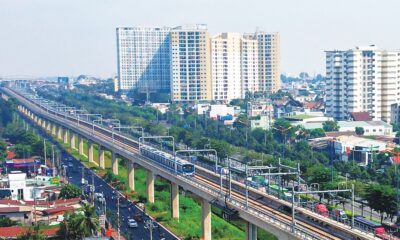

TOD model essential for real estate
-


Townhouse rents fall in HCM City as demand declines
-
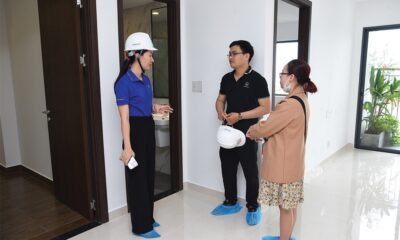

Young homebuyers to get a foot up
-


Keppel remains steadfast in Vietnamese real estate market
-
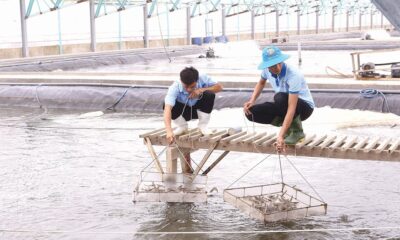

Project strategy adjustments take shape within real estate
-


Indochina Capital – 25 years leading transformation in Vietnam’s real estate market
Companies
Hanoi to renovate Hoan Kiem Lake area for park development
Published
10 months agoon
March 12, 2025The renovation project will involve extensive surveys to assess key architectural landmarks, historical sites, and cultural icons that warrant preservation.
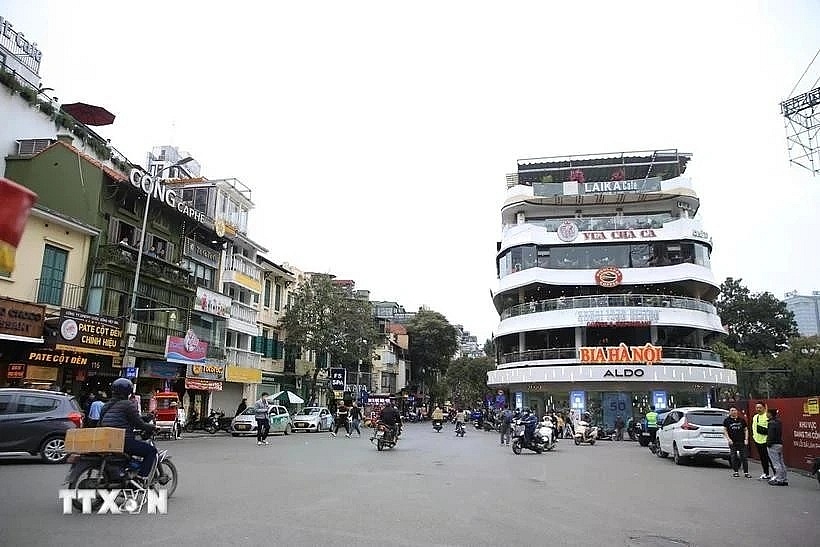 |
| The commercial centre building, commonly known as the ‘Shark Jaw’ (Ham Ca Map) building, at Dong Kinh Nghia Thuc Square by Hoan Kiem Lake. (Photo: VNA) |
Hanoi – Vice Chairman of the Hanoi People’s Committee Duong Duc Tuan has requested a renovation plan for the eastern side of Hoan Kiem Lake, envisioning it as a special square and park zone.
The renovation project will involve extensive surveys to assess key architectural landmarks, historical sites, and cultural icons that warrant preservation. The aim is to propose new functions for the facilities to ensure they blend harmoniously with the area’s scenic landscape and historical significance.
On March 11, Tuan instructed the Department of Finance to swiftly establish a working group responsible for planning and revamping the Hoan Kiem Lake area, including the iconic Dong Kinh Nghia Thuc Square. It must draft a document on the investment policy for the special square and park zone and submit to the permanent members and the Standing Board of the municipal Party Committee by March 13, 2025.
To support the plan, the Department of Agriculture and Environment has been assigned to provide a detailed 1:500 scale topographic map of the area for the Hoan Kiem district People’s Committee and the Hanoi Urban Planning Institute. Additionally, the department will compile cadastral data to facilitate site clearance, compensation, and support mechanisms. Adjustments to land use plans should also be proposed to ensure seamless project implementation.
The project will also include a three-level underground space beneath the eastern side of Hoan Kiem Lake. This underground development will connect to the C9 station of the Nam Thang Long – Tran Hung Dao metro line. Measures will be taken to safeguard nearby heritage structures during the construction process, while functions for underground spaces will be proposed to optimise land use and meet public demand.
Tuan urged all departments to accelerate their proposals to execute the project. The development will unfold in two phases: the initial phase will involve the construction of the above-ground park and square using public investment, while the second phase will introduce underground facilities integrated with the C9 metro station following the Transit-Oriented Development (TOD) model.
To address the needs of displaced residents, the Department of Agriculture and Environment has been tasked with proposing maximum compensation policies. Eligible households will be offered resettlement land in the outlying district of Dong Anh. Meanwhile, resettlement housing will be sold to those not qualifying for land compensation.
In anticipation of resettlement demand, the city is fast-tracking a review of approximately 100ha of land in Dong Anh district to ensure sufficient space for resettlement efforts linked to this and other major development projects in Hanoi.
Companies
Zebra Technologies announces new strategy for 2025 in Vietnam
Published
10 months agoon
March 12, 2025Zebra Technologies Corporation, a global leader in digitising and automating frontline workers, is looking to expand in Vietnam by anchoring on an extensive network of partners, continued investment, and a comprehensive portfolio of solutions.
The company announced its 2025 strategy for Vietnam with the three pillars at its Regional Partner Summit 2025 held in Danang on March 5, underscoring its commitment to empowering partners and customers in Southeast Asia.
Talking to VIR at the event, Christanto Suryadarma, sales vice president for Southeast Asia, South Korea, and Channel APJeC at Zebra Technologies, said, “We are seeing significant interest and opportunities for Vietnam to leapfrog in technology adoption. We are continuing to invest in enabling our customers in Vietnam to access the right solutions. That is our primary investment.”
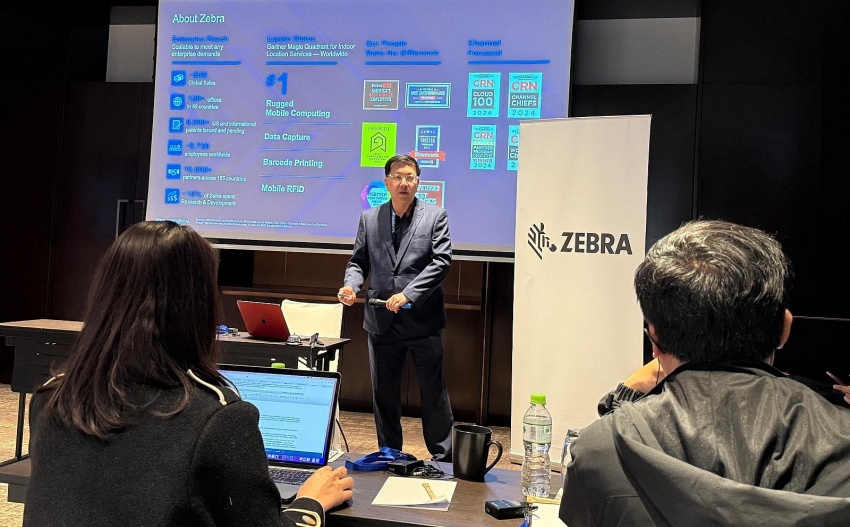 |
| Christanto Suryadarma, sales vice president for Southeast Asia, South Korea, and Channel APJeC. Photo: PV |
“We are continuously investing in training local Vietnamese partners on how to help customers digitise and automate. This is an ongoing investment. We conduct training sessions, provide demo units, and run proof-of-concept projects,” he added.
With a comprehensive portfolio of solutions, including everything from simple scanning devices to mobile computers, tablets, RFID, and machine vision, Zebra offers tailored solutions to meet the diverse needs of businesses in Vietnam to excel in a digital era.
Suryadarma noted, “Overall, our investments focus on strengthening our presence, expanding our capabilities, and enabling knowledge transfer. We equip our team and partners with the expertise they need so that when they engage with customers, they can offer well-prepared solutions.”
Zebra now has strong partners across Vietnam, as well as Vietnamese companies operating internationally. The company also has a repair and maintenance depot in Vietnam, where it has invested in training local workers.
Zebra opened its first service centre in Ho Chi Minh City in 2021. In 2022, Zebra expanded the centre to meet rising demand for printers, adding support for desktop, mobile, label, and industrial printers. Collaborating with distributors like SMC and Elite Technology, Zebra has developed a diverse partner ecosystem in Vietnam.
 |
| Christanto Suryadarma, sales vice president for Southeast Asia, South Korea, and Channel APJeC at Zebra Technologies. Photo: PV |
“Vietnam is a crucial market for Zebra. Our strong team and extensive certified partner network are dedicated to delivering industry-specific solutions to our customers,” said Suryadarma. “Leveraging our global expertise and innovative solutions, we aim to support all companies operating in Vietnam, across sectors like manufacturing, retail, transportation, logistics, and healthcare, to overcome challenges and achieve digital transformation.”
The 2025 strategy shows Zebra’s long-term commitments in Vietnam. According to Zebra Technologies, its strategy is deeply linked to megatrends – external factors that shape the tech industry. These include mobility and cloud, AI, digitalisation and the Internet of Things, e-commerce, and automation.
To continue offering a comprehensive portfolio of advanced solutions, innovation is at the heart of Zebra Technologies where it invests heavily in business development and research and development. Last year, the company’s revenue was approximately $5 billion, of which it allocated about 10 per cent towards innovation.
“Innovation allows us to continuously develop new technologies and solutions that address real-world challenges. By leveraging mobility, cloud computing, scanning, RFID, and other technologies, we can provide real-time tracking and insights to meet the growing business demands of optimising workflows, improving efficiency, and enhancing decision-making,” the Zebra representative noted. “Our goal is to seamlessly connect all these elements – assets, people, and activities – through enterprise mobile computing. The more we can connect frontline workers, the better we can enhance business operations.”
Commitment to innovation has positioned Zebra Technologies as the leader in rugged mobile computing. While consumer mobile computing – laptops and smartphones – is widely used, Zebra dominates the enterprise mobile computing space, particularly in rugged devices designed for business-critical operations.
Another area where the company is very strong is data capture. Today is the era of AI. But for AI to work effectively, it needs data—clean, accurate data. As the company specialises in data capture, it is in a strong position to align with AI-driven market trends.
Along with data capture, the company is also the leader in barcode printing. Many businesses need barcode labels. These labels are used in countless industries. In Vietnam, for example, it’s becoming common in restaurants where instead of taking orders manually, customers simply scan a barcode on the table to access the menu.
Another area where Zebra holds the number one position is mobile RFID. RFID stands for radio frequency identification. This is a fast-growing business, and today, the world consumes approximately 30 billion RFID tags annually.
Key industry trends for 2025
Manufacturing, transport and logistics, and retail are the areas where Zebra is deeply involved.
Suryadarma said that manufacturing is a major industry in Vietnam. Zebra’s machine vision and AI solutions can significantly enhance manufacturing operations. He sees a lot of potential in helping businesses improve efficiency and productivity through automation and smart technology.
“We recognise the trends in this sector. Now, we are seeing many economic uncertainties, trade discussions, and shifting policies that are prompting manufacturers to focus on incremental, scalable improvements rather than sweeping transformations. Manufacturers want to automate their processes, but they are looking for cost-effective modernisation strategies. This requires new approaches and scalable automation tools for success,” he admitted.
 |
| Zebra Technologies’ 2025 Regional Partner Summit in Danang. Photo: PV |
In transport and logistics, companies are now balancing onshore and offshore solutions while also ensuring sustainability. They would rather not generate excessive waste; instead, they want to reduce carbon footprints and implement greener supply chain practices. This shift requires greater visibility and real-time insights.
In logistics, the market sees a growing interest in AI, RFID, real-time tracking, and new visibility technologies. These are becoming increasingly important. For example, Vietnamese company Nhat Tin Logistics has implemented Zebra’s scanning solutions, improving speed, efficiency, and productivity in scanning and delivery operations.
Moving on to retail, customer expectations and labour shortages are two major challenges in this industry. This is where technology is making an impact.
“With Vietnam’s large population, retail is booming. We’re seeing a lot of automation in retail. For example, many cafés now use digital solutions – customers scan a QR code, place orders, and receive their items seamlessly. Many retailers have already adopted RFID to enhance customer experience. While we cannot disclose specific names due to customer confidentiality, we can confirm that RFID adoption is happening in Vietnam,” he added.
An example is in warehouses. When people walk into a warehouse, they do not just see shelves of products, they see workers constantly moving, picking, sorting, and delivering items. These workers are the backbone of warehouse operations. Similarly, in hospitals, nurses and doctors are on the front line, caring for patients and ensuring smooth medical operations.
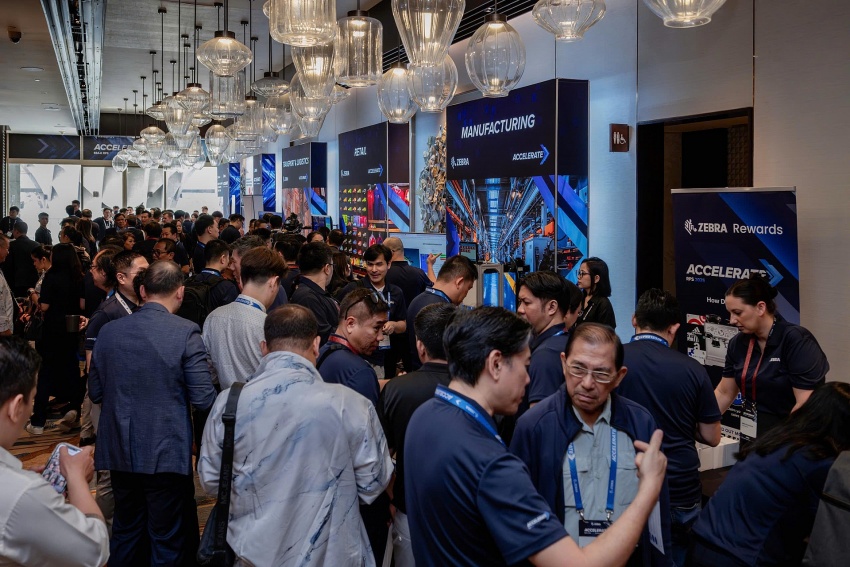 |
| Many regional partners joined the summit. Photo: PV |
Healthcare is another key area of growth. Similar to other countries, people in Vietnam increasingly expect better healthcare services, both from government and private hospitals. Digitalisation plays a crucial role in improving healthcare efficiency.
“With nearly 8 per cent GDP growth last year, the challenge now is how to push Vietnam’s growth even further. Maybe one day, Vietnam can reach 10 per cent or even higher. It is not impossible, but it comes down to the people, the partnerships, and strong leadership across all organisations,” he noted.
Vietnam is to work with the United States on ways to reach a trade balance and circumvent the latter’s heavy tariff imposition.
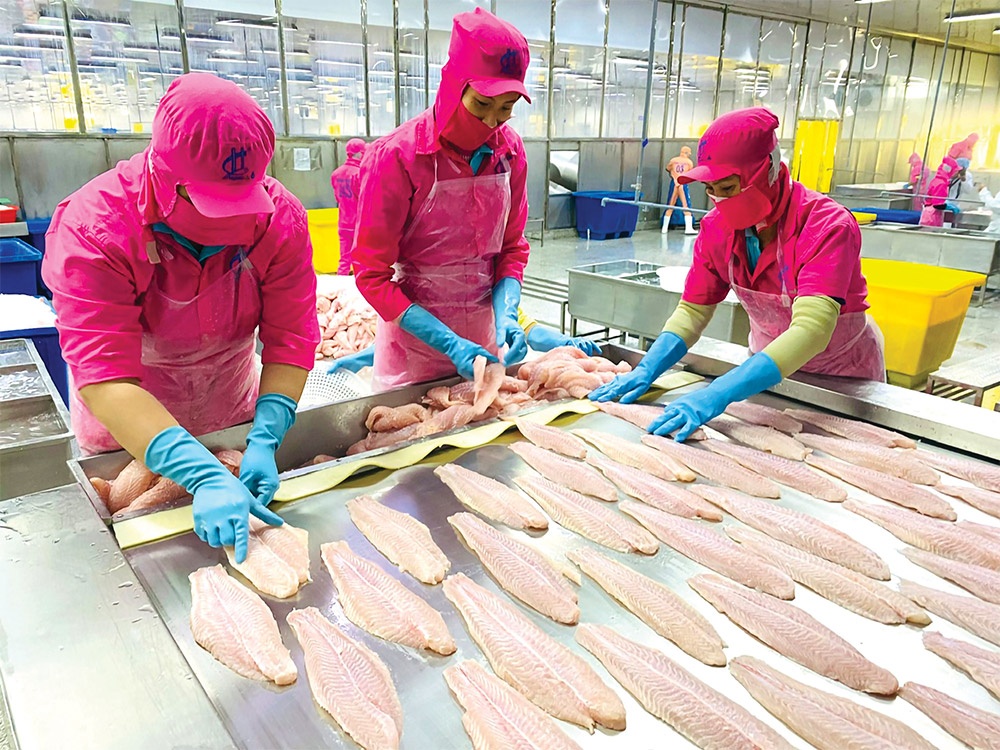 |
| Vietnam is improving local products and origin of goods information, photo Le Toan |
Later this week, Minister of Industry and Trade Nguyen Hong Dien will fly to the US to work with its Department of Commerce on further materialising the comprehensive strategic partnership forged in 2023.
“The main reason for the trade imbalance between the two countries comes from the complementary nature of the two economies, which is due to the export and foreign trade structure of the two countries,” said Deputy Minister of Industry and Trade Nguyen Sinh Nhat Tan at last week’s governmental press conference in Hanoi.
“Vietnamese exports to the US compete with those from third nations, not directly with US enterprises in the US market. Meanwhile, they even also create conditions for American consumers to use Vietnamese goods at cheap prices,” Tan added.
According to the Ministry of Industry and Trade (MoIT), Vietnam is an open economy which pursues a free trade policy. The tariff difference on US goods is not high and may decrease in the future because Vietnam will reduce most favoured nation tariffs on many types of goods.
“Therefore, a number of US products with high competitive advantages such as automobiles, agricultural products, liquefied natural gas, and ethanol will benefit from this policy,” Tan said. “At the same time, it will create positive import flows from the US, contributing to improving the trade balance between the two.”
In addition, there is an ongoing policy dialogue on trade and investment between the two countries under the Vietnam-US Trade and Investment Framework Agreement founded in 2007. Therefore, existing problems in bilateral trade and economy, if any, will be proactively discussed through the US-Vietnam Council on Trade and Investment.
This is a mechanism that has created a common vision, contributed to the long-term direction, and stabilised the development of bilateral economic and trade relations, the MoIT said.
In addition, the Vietnamese government has taken the initiative in assigning ministries and sectors to review obstacles to the US “on the basis of fair trade, reciprocity, in accordance with the law, harmoniously and satisfactorily meeting the interests of all parties”, the ministry added.
“Vietnam will also create better conditions for US investors to participate in the process of forming and developing key industries in Vietnam, especially key energy projects involving new energy, hydrogen, and nuclear power,” Tan explained. “This will create a premise to increase imports of liquefied natural gas, fuel, machinery and equipment, and technology from the US, thereby contributing to improving the trade balance between the two countries.”
Via the US Embassy to Vietnam and the country’s counterpart in the US, the MoIT has sent a message that Vietnam wishes to maintain and develop a harmonious and sustainable economic and trade relationship of mutual benefits with the US. At the same time, Vietnam reaffirmed that it has and will never create any policy that hurts labourers or the national security of the US.
Since returning to office in January, US President Donald Trump has launched a sweeping series of tariffs, marking a return to the aggressive trade policies of his first term. The measures reflect the administration’s broader effort to protect domestic industries and address what the president views as unfair trade practices.
According to Asia Briefing, a subsidiary of Dezan Shira & Associates, as a major supplier of goods to the US, the tariffs could significantly impact Vietnamese exporters.
“It is also possible that Vietnam will become the target of country-specific tariffs, as the country has a large trade surplus with the US and has previously been accused by the US administration of engaging in unfair trade practices,” Asia Briefing said. “However, Vietnam may be able to mitigate the impact by striking a deal with the US, especially if it agrees to increase imports of American goods or ease market access for businesses from the US.”
However, Adam Sitkoff, executive director of the American Chamber of Commerce in Hanoi, told VIR that it was too early to gauge the impact of tariffs. In the past month, Vietnamese officials have repeatedly said they would seek compromises with the US on trade.
“This is likely to include promises of additional aeroplane purchases, boosting Vietnam’s imports from the US of liquefied natural gas, better market access for American agricultural products, and an adjustment of some regulations to make it easier for US companies to access the Vietnamese market,” Sitkoff said.
He suggested that Vietnam should take some necessary actions, including creation of more transparency in the origin of goods and increasing local content, and doing more to solve burdens and barriers faced by American companies and investors here.
Vietnam’s exports to the US reached $119.6 billion last year and $19 billion in the first two months of 2025.

Bac Giang International Logistics Centre launched

Vietnam’s Exclusive Economic Zone boasts over 1,000 GW of wind power potential: report

Uncertainty weighing on real estate

Central Vietnam city seeks $1.84 bln for 15 projects in economic zone

